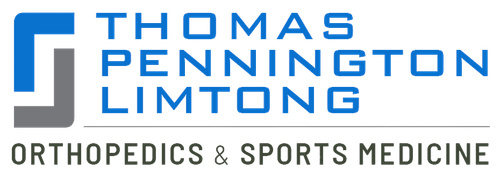 Shoulder is the body’s most flexible joint, but this flexibility also makes it vulnerable to injury and instability. In case of mild problems, non-invasive solutions may first be recommended to treat the shoulder. However, if there is a delay in surgical repair, the shoulder joint may be difficult to treat later.
Shoulder is the body’s most flexible joint, but this flexibility also makes it vulnerable to injury and instability. In case of mild problems, non-invasive solutions may first be recommended to treat the shoulder. However, if there is a delay in surgical repair, the shoulder joint may be difficult to treat later.
Correct diagnosis and treatment will make all the difference in the long run for shoulder function. The Knee and Shoulder Institute, headed by board certified orthopedic surgeons, Dr. Steven Thomas and Dr. Gregory Bigler, provides shoulder surgery to patients in Las Vegas, Nevada and surrounding communities.
Bursitis or Tendinitis
Overuse of the shoulder from repetitive activities such as swimming, painting, weight lifting or certain types of factory jobs may cause impingement of the rotator cuff. At an early stage, the problems may be addressed by modifying the specific motion that is causing the symptoms of pain and with a shoulder rehabilitation plan. If the problem does not resolve, shoulder surgery may be performed.
Partial Rotator Cuff Tears
Chronic inflammation and the development of spurs on the acromion underside may occur due to partial thickness rotator cuff tears. The first line of treatment will usually be conservative and non-invasive, such as modification of activity and mild exercise. Cortisone injections may be used in a few cases. In a situation where non-invasive treatment fails, shoulder surgery may have to be performed to remove the spurs and to repair the rotator cuff.
Full-Thickness Rotator Cuff Tears
Falls, heavy lifting, partial thickness rotator cuff tears or impingement may cause full-thickness rotator cuff tears. Although non-invasive solutions are successful in many cases, but some patients may experience persistent pain and may require surgical repair.
The surgeon may apply the arthroscopic surgical technique to enable shaving of spurs, examination of the rotator cuff, and repair of the tears. It will be followed by a comprehensive rehabilitation program to restore normal shoulder function.
Shoulder Instability
Subluxation and dislocation are two main forms of shoulder instability. A subluxation refers to a partial dislocation, where the shoulder is partially out of the shoulder socket. Shoulder dislocations may occur repeatedly due to instability.
In case of repeated dislocations, shoulder surgery may be necessary. The surgeon may recommend open or arthroscopic surgery. Either procedure will be followed by extensive rehabilitation, usually along with the physical therapy.
Fractured Collarbone or Arm Bone
A fall on the side of the shoulder may cause a fractured collarbone. The injury is usually treated in a non-invasive way with a splint or sling. But a severely displaced fracture may require surgical repair.
A fractured head of the arm bone or humerus may occur as a result of a fall on an outstretched arm. If the bone is displaced or fragmented, it may require surgical repair. In some cases, the bone may have to be replaced with an artificial joint.
Shoulder Replacement
If the patient suffers from painful shoulders and limited motion, with no relief from previous surgical or non-surgical treatments, the surgeon may recommend shoulder replacement surgery. It may involve replacement of the head of the shoulder bone or replacement of the entire shoulder socket.
If you would like to schedule an appointment or learn more about the Knee and Shoulder Institute procedures & treatments performed by Las Vegas, Nevada board certified surgeons Steven C. Thomas, MD and Gregory T. Bigler, MD. call (702) 933-9393; Physical Therapy (702) 933-9394
